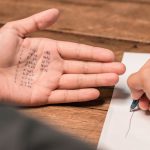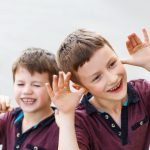Using a Saliva Liquid Biopsy for Concussion Grading
In a presentation this week at the 2017 Pediatric Academic Societies Meeting in San Francisco, entitled Peripheral MicroRNA Patterns Predict Prolonged Concussion Symptoms in Pediatric Patients, a novel liquid biopsy for diagnosing concussion was discussed. Over the past few years, many athletic and scholastic organizations, as well as parents have begun to take a serious look at activities that pose a risk of concussions – mostly contact sports. A significant question being raised is how can the initial diagnosis of concussion be less subjective? Currently, concussion screening often involves sideline examination by a sports medical professional, which can be very subjective and driven by a collective desire to return to play as soon as possible. The addition of a quick and objective measure of concussion would help dramatically, and allow for more timely care to be administered after head injury.
MicroRNA Mirrors Changes in Cerebrospinal Fluid
Penn State College of Medicine researchers are currently studying 50 children – ages 7-18 – with mild traumatic brain injury.2 MicroRNA (miRNA) from saliva is being analyzed. MiRNA has been shown to mirror changes in the cerebrospinal fluid in patients with severe brain injury.1 The question is whether these changes will be significant enough to measure during more mild brain trauma. Concussion symptoms were also evaluated through Sport Concussion Assessment Tool surveys (SCAT-3) within 14 days after injury, and at 4 weeks post-concussion. Twenty-nine of the child participants experienced prolonged symptoms of headache, fatigue and difficulty concentrating. The research on the miRNA levels showed that these biomarkers were significantly more effective in showing which children were more likely to experience these long term symptoms than the SCAT-3 survey. The Survey was shown to be less than 70% accurate in identifying who would have prolonged concussion symptoms. The miRNA in saliva on the other hand, had roughly 90% accuracy in predicting whether symptoms would remain after 1 month.
Sources:
- Di pietro V, Ragusa M, Davies D, et al. MicroRNAs as Novel Biomarkers for the Diagnosis and Prognosis of Mild and Severe Traumatic Brain Injury. J Neurotrauma. 2017
- Press Release
 Node Smith, associate editor for NDNR, is a fifth year naturopathic medical student at NUNM, where he has been instrumental in maintaining a firm connection to the philosophy and heritage of naturopathic medicine amongst the next generation of docs. He helped found the first multi-generational experiential retreat, which brings elders, alumni, and students together for a weekend campout where naturopathic medicine and medical philosophy are experienced in nature. Three years ago he helped found the non-profit, Association for Naturopathic ReVitalization (ANR), for which he serves as the board chairman. ANR has a mission to inspire health practitioners to embody the naturopathic principles through experiential education. Node also has a firm belief that the next era of naturopathic medicine will see a resurgence of in-patient facilities which use fasting, earthing, hydrotherapy and homeopathy to bring people back from chronic diseases of modern living; he is involved in numerous conversations and projects to bring about this vision.
Node Smith, associate editor for NDNR, is a fifth year naturopathic medical student at NUNM, where he has been instrumental in maintaining a firm connection to the philosophy and heritage of naturopathic medicine amongst the next generation of docs. He helped found the first multi-generational experiential retreat, which brings elders, alumni, and students together for a weekend campout where naturopathic medicine and medical philosophy are experienced in nature. Three years ago he helped found the non-profit, Association for Naturopathic ReVitalization (ANR), for which he serves as the board chairman. ANR has a mission to inspire health practitioners to embody the naturopathic principles through experiential education. Node also has a firm belief that the next era of naturopathic medicine will see a resurgence of in-patient facilities which use fasting, earthing, hydrotherapy and homeopathy to bring people back from chronic diseases of modern living; he is involved in numerous conversations and projects to bring about this vision.








